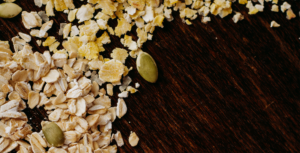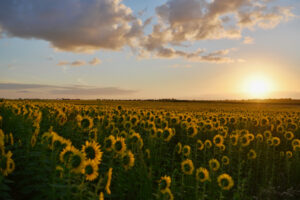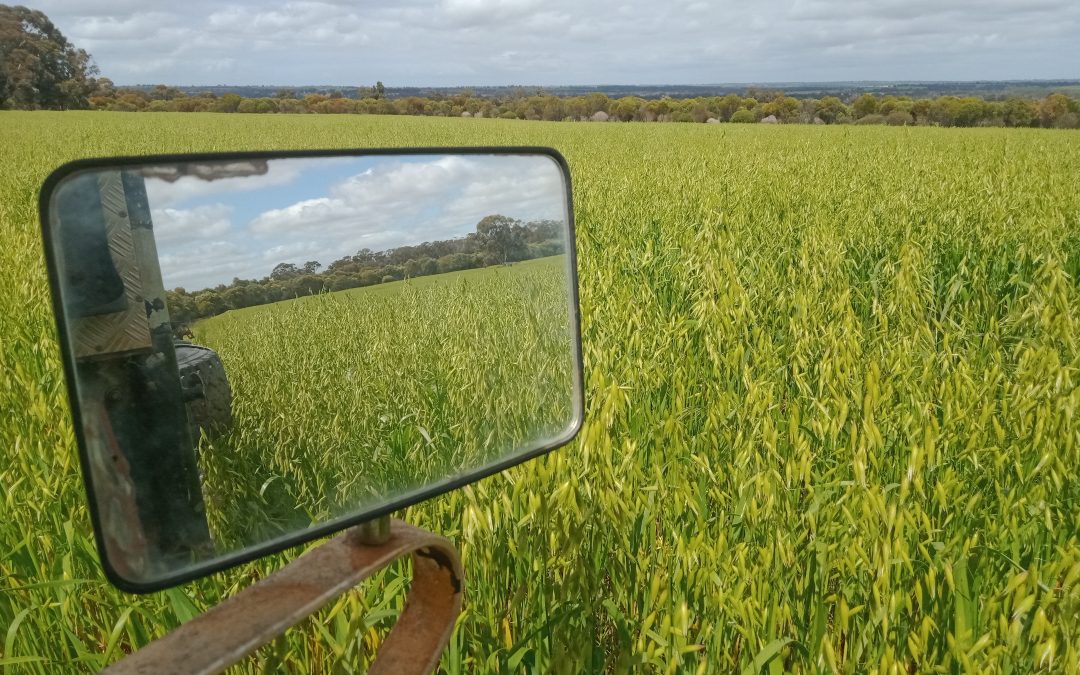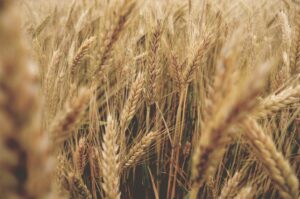ORICoop has been in deep conversations with our members, producers, supply chain businesses and investors that are interested in a more sustainable and resilient food and farming system. We are keen to share our learnings – and to ask the question of the future of our food and financial systems. And what is the true colour of money?
Right now – Farmers around the country are innovating and transitioning quickly. Quicker in fact than Governments and Industry bodies realise. They are pressured by commodity prices, by wars overseas, by severe climatic events and rising interest rates. Yet with the current rising inflation – producers are not being paid much more than they were 5 years ago. Despite their costs increasing just like everyone else’s. Perhaps this is our new normal as outlined by The Guardian recently.
The elephant in the room is the consumer. The end buyer. The supermarkets. What people are willing to pay for healthy, local nutritious food. And has this split changed over the past 50 years – with regard to our lifestyles, work-life balance, debt and the priority of food over housing or other lifestyle choices. The deeper realisation of the value of health and how nutrient dense food affects the cost of maintaining good health.
What does this mean for farmers? This means that many producers (dairy and grain growers are good examples) are being asked to grow more volume per hectare of land than ever before. To the detriment of the nutrient density of the food and the land that it’s grown on. With the ambition to increase our agricultural production to over $100B from the National Farmers Federation. On land that is more expensive than ever in history with input and labour costs also at an all time high. And yet – the end price producers are receiving at the farm-gate is not that different to 10 years ago. In no way increasing comparative to the increased costs of food provided to consumers at the supermarket. Or linked to the highly profitable returns of the major supermarkets. The system is broken.
“The farmer is the only man in our economy who buys everything at retail, sells everything at wholesale, and pays the freight both ways.” John F Kennedy
So, how do we change this paradigm? Global Domestic Product measures the increase of our economy, yet does it attribute the true cost of this economic measure. Or considering the profitability and productivity opportunity across Agriculture – if we measured this ‘true cost’ paradigm differently. With increased labour costs, some of the highest in the world. How can Australia sustainably grow food comparative to many other countries. Yes with some of the largest swathes of land in the world. Noting New Zealand has a subsidised Pacific Island labour program. Europe has a heavily subsidised agriculture sector. And the US has strong support for commodity based agricultural production systems. Is Australia being left behind? Should we have an incentivised land stewardship package? Or is there a risk we will be priced out of the market? Or have we not demonstrated our clean and green image well enough to the rest of the world? Should we be more focussed on feeding our population before selling into these larger world commodity markets that may actually be part of the overall problem.
ORICoop with our ORCA ‘Farmers Own’ brand is on a bold mission. To provide bulk organic products that streamlines a more efficient organic supply chain. That provides healthier food economically to more people. And ensures that producers are sustainably growing what the market is demanding. Keeping the supply chain efficient, nimble and ensuring that the grower and end buyer understand the different parameters of a complex supply chain.
We are determined to build a stronger domestic organic market. So food travels less distance to more people, is more affordable and has a stronger provenance story. It can be healthier, grown and transported with less of a carbon footprint and more of a conscious understanding of how it was grown. Organic products have market fluctuations based on seasons, based on the capacity to plant or harvest crops. It takes innovative producers to manage significantly different years – from 2019 (severe drought) to the last two years of abundant rainfall and flooding in some regions. What producers need is markets that work with their capacity to grow and innovate. And to ensure that products grown have the best opportunity into the market – not just the perfect looking apples, or premium 14% protein grains or only Autumn flush dairy milk. We must get better at growing, manufacturing and utilising food in a truly sustainable way that ensures we are efficient, less wasteful and understand the planetary boundaries of truly sustainable agriculture.
 What does this have to do with the Colour of Money? For many years investors have invested into Agriculture as a straight property investment. Not to underwrite our food security or support transition to better land stewardship practices. What if we used ‘true cost accounting’ to reflect the invisible cost to consumers of ameliorating the cost of the externalities of the industrial food production system? To reconsider the lucrative returns of 12-14% year on year. With the plan to exit after 7-9 years with a real estate property acquisition that includes significant capital growth. They call it ‘ethical impact’. The reality is, most agricultural investments provide a low (3-5%) cash return on investment (ROI) annually with a higher proportion allocated to capital growth – in the range of 5 – 8% annually. But is this model truly sustainable? For our population? Or for the planet?
What does this have to do with the Colour of Money? For many years investors have invested into Agriculture as a straight property investment. Not to underwrite our food security or support transition to better land stewardship practices. What if we used ‘true cost accounting’ to reflect the invisible cost to consumers of ameliorating the cost of the externalities of the industrial food production system? To reconsider the lucrative returns of 12-14% year on year. With the plan to exit after 7-9 years with a real estate property acquisition that includes significant capital growth. They call it ‘ethical impact’. The reality is, most agricultural investments provide a low (3-5%) cash return on investment (ROI) annually with a higher proportion allocated to capital growth – in the range of 5 – 8% annually. But is this model truly sustainable? For our population? Or for the planet?
To underwrite our food security we need to measure capital differently. One that views food security and land stewardship as critical to our very survival. Economically but also metaphorically. Did you know that producers pay a higher rate of interest on farmland (property) than standard interest rates? Even though land is property with property security? The front porch is not very palatable when you’re wanting something to eat, it is a question of priority? Why are producers left to fend for themselves when markets fluctuate and do not always reflect the true cost of food production. If true cost accounting was used in real terms farmers would be considered to be slaves, when considering their net profit (outside of a real estate gain), comparative to other lucrative and increasing wage levels across essential industries. Walden Mutual in the US is a leading example of how investment can be done differently. We need models like this in Australia, urgently.
To change this paradigm, investors must passionately support a fairer food and farm transition with a deeper lense, beyond just a philosophical idea. Investors that are patient and driven by ethical, sustainable and reasonable returns that considers farmers, and the health of the land and the food we eat. Investors that are looking for a co-beneficial relationship that revolutionises food and farm systems in a sustainable and earth centric manner. To invest into food systems that are innovative, multi-layered, diverse and resilient for food, farming and community benefit. Food systems that have short supply chains and are not commoditised for the benefit of the large agri-business sector – but are driven by the needs of our communities. First and foremost.
 The ORCA investment Phase 2 is opening for investment shortly. This is an exciting step for ORICoop. It provides opportunity for larger investors to participate in supporting infrastructure investment into localised organic supply chains – infrastructure that enables grain to be processed within shorter distances. Including grain that is grown in a more regenerative and sustainable manner – that includes cover crops, legumes and specialty grains (lupins a prime example). Rather than a commoditised wheat, oat and barley focus that depletes the carbon and nutrient bank in the soil if not managed well, and is significantly affected by world markets. This limits the growth of the organic sector that has much capacity to flourish and expand into these premium niche markets. Australia has more than 55M hectares of farmland that is certified organic farmland. That is more than half the world’s total certified land area. From that land our organic sector is worth more than $3.6B (according to the Australian Organic Market Report), noting the US market has just exceeded US$60 Billion for the first time in history (from less land area). The Australian market is growing at 12-14% annually. What if this increased to $5B annually, or by 20% year on year these dividends were reinvested to improve on-farm knowledge, supply chain knowledge and efficiency with strategic market development? Whilst addressing climate change mitigation, adaption and addressing biodiversity loss as additional dividends. Australia can be a leader in supplying Asian markets and the Middle East for quality organic food and fibre. While looking after our land and our regional communities.
The ORCA investment Phase 2 is opening for investment shortly. This is an exciting step for ORICoop. It provides opportunity for larger investors to participate in supporting infrastructure investment into localised organic supply chains – infrastructure that enables grain to be processed within shorter distances. Including grain that is grown in a more regenerative and sustainable manner – that includes cover crops, legumes and specialty grains (lupins a prime example). Rather than a commoditised wheat, oat and barley focus that depletes the carbon and nutrient bank in the soil if not managed well, and is significantly affected by world markets. This limits the growth of the organic sector that has much capacity to flourish and expand into these premium niche markets. Australia has more than 55M hectares of farmland that is certified organic farmland. That is more than half the world’s total certified land area. From that land our organic sector is worth more than $3.6B (according to the Australian Organic Market Report), noting the US market has just exceeded US$60 Billion for the first time in history (from less land area). The Australian market is growing at 12-14% annually. What if this increased to $5B annually, or by 20% year on year these dividends were reinvested to improve on-farm knowledge, supply chain knowledge and efficiency with strategic market development? Whilst addressing climate change mitigation, adaption and addressing biodiversity loss as additional dividends. Australia can be a leader in supplying Asian markets and the Middle East for quality organic food and fibre. While looking after our land and our regional communities.
What the food and agriculture sectors need is a new Colour of Capital. One that is driven by urgency, yet patient and compassionate to the seasonality of agriculture and food systems in a changing climate. That understands we are all in this together. Australia must get better at growing and processing local food at scale. Like our forefathers and mothers did. To rebuild and scale efficient and local processing capacity, and to re-energise food production that enhances regions for their climatic and farming strength. And to build and value community driven food systems for the better. To have an innovative investment capacity that exemplifies our strength of markets, our capacity to grow large volumes of product in a sustainable manner, our seasonal diversity and access to land.
The world needs a different Colour of Capital that builds long term impact for the better. If you are interested in finding out more you can complete the EOI here.
Written by Carolyn Suggate,
Executive Director of ORICoop
E – Carolyn’s email
** Photo Credit – David McFall


